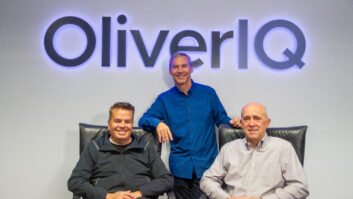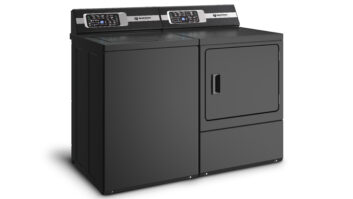COSTA MESA, CALIF. – As the camera market shifts focus from a high-volume point-and-shoot unit-share-driven race to a slower-paced higher-margined play for the professional and advanced amateur audience, leading camera makers are beginning to shore up areas of their operations aimed at customer retention.
For camera market leader Canon those efforts have been directed at its service and support programs, bringing more and better U.S.-based call centers, repair stations and educational services closer to where customers actually work and live.
Most recently, the company officially cut the ribbon on two such West Coast support operations – a Canon Customer Experience Center in Costa Mesa, Calif., and a 33,682-square-foot Canon Information Technology Services (CITS) call center in Albuquerque, N.M., which provides support for professional photographic, cinema, printing and office-solutions customers.
The collective effort is expected to significantly shorten the turnaround time for equipment repairs and service – especially critical for professional photographers and cinematographers – while providing in-person or call-in support lines using trained U.S.-based representatives providing consultations customers who speak English or Spanish.
“I think it’s fairly obvious that we’ve made a significant investment in how do we better touch, how do we better serve, and how do we better deliver service to our customers,” said Eliott Peck, Canon information technologies and communications group senior VP.
For Peck, the renewed emphasis behind customer service brings his career with Canon full circle. Peck recalled that when he joined Canon nearly 40 years ago, his first job was in customer service. Now, in part, he’s overseeing a much larger operation delivering the same commitment to customer care on a much larger scale.
“What you see all of these people doing out there [in the new Costa Mesa, Calif., Customer Experience Center] was almost a one-man operation back about 40 years ago,” Peck recalled, adding that when he moved into sales a few years later he learned a valuable lesson that “our dealers need to be supported.”
Following Canon’s launch of the AE-1 in the ’70s, coupled with an intensive and unusual at the time television ad campaign, and the launch of Canon’s digital camera strategy in the ’90s, Peck said the camera brand vaulted from a tiny sliver on a U.S. market share chart to its current dominant position ($35.5 billion worldwide — $10 billion from the Canada/U.S. region) at the top of the leader board – over 45 percent of the DSLR market and almost 30 percent of the compact camera market.
“This is not all about the technology and manufacturing. It is a culmination of everything we’ve been doing for the past 30 years to make our brand the top in the U.S. That includes our technology, our service and support, and how we communicate with end users,” Peck said.
Still, he added, the company traditionally ranks in one of the top four positions every year for patent submissions – underscoring its emphasis on innovation.
Illustrating the level of growth Canon has seen, Peck said he averaged receiving 25 cameras a day for processing and repairs when he started with the company, and that has grown to almost 10,000 phone calls a day, each averaging about 10 minutes, and 1,000 daily social-media requests. To handle that volume Canon employs 1,100 people in its various service and support operations.
“This is all U.S.-based,” Peck said. “We don’t outsource our service and support operations. All the call center calls come to either our center in Virginia or our brand-new call center in Albuquerque, N.M.”
He later added, “To see what some of our competitors are doing in service and support, you’d have to get on a plane and make a 14-hour flight.”
Canon spends six to eight weeks training each service representative, and the average length of time for the job is eight years.
The 38,000-square-foot Costa Mesa facility houses the Canon Experience Center, a new branch of the Canon Americas Marketing Engineering Technology Center (METC), offering enthusiasts a showcase of Canon’s many award-winning cameras, lenses, and photo and business printers.
The Experience Center now offers Southern California Canon equipment owners and important professional clientele face-to-face service and support experiences, in addition to a 35-seat theater where Canon Live Learning, Explorers of Light (EOL) and Canon Professional Services (CPS) events will take place throughout the year.
The Center, which Peck described as a “bee hive” of activity, includes a nearly 5,000-square-foot showroom; a Canon Professional Services (CPS) members-only lounge where members can relax while equipment is cleaned or repaired on the post; and an operational photo studio.
The new Costa Mesa and Albuquerque centers join current facilities in Virginia, the Canon Technology Center in Hollywood (supporting Cinema EOS products), a Ridgefield Park, N.J., broadcast equipment support facility near New York City; and a service facility near Chicago.
“We really have comprehensive and robust coast-to-coast operations to support the operations for end users,” Peck said.
Starting this month, Canon will begin a comprehensive program to get the service and- support message out to the professional markets, including YouTube video postings using real Canon employees showing the training representatives receive before handling customer calls.
Heading into the holiday selling season, Peck said that Canon is now in the process of ramping up its marketing activities, which will include the continuation of the “Bring It Campaign” behind Canon DSLRs; the “Project Imagin8ion” campaign/contest involving actor/director/producer Ron Howard; the just launched “North Pole Make A Wish” campaign supporting Pixma printers; and a comical “Never Again” TV campaign behind Canon photo printing designed to connect the message of the importance of the permanence of a printed photo.
Also, to ensure its long-term engagement with end users, Canon continues to run its “See Impossible Campaign,” designed to connect the passion of imaging with the various types of businesses in which Canon is involved.
“I think we have a very powerful message that is not about a product or a technology, but about how do we connect with end-users? How do we engage with them and make the experience better for them?” Peck said.












